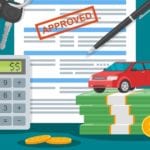It’s no secret that new cars are expensive; most people view them as a major investment and spend a great deal of time focusing on research to get the best vehicle they can for their money. As a way to combat the increasing prices of new vehicles, a lot of people turn to buying used cars that have already depreciated from their original value. While used cars are still the most affordable option in many cases, their prices have been on the rise for years.
Recent trends, in fact, have shown that used car prices are the highest they have been in a long time, perhaps ever. Data from Edmunds, one of the leaders in evaluating vehicle prices and tracking trends over time, suggests multiple reasons for this increase, including much greater demand for used vehicles. With increasing demand, prices have gone up to record levels for used cars, trucks, and SUVs, particularly for the most popular types and market segments of those vehicles. What does this mean?
To put it simply: used cars cost more now than they ever have before, and the least expensive models out there sell faster than they did five years ago. This means that it’s more important than ever before to do your research, but also know exactly what you want and what you can spend. That way you’re ready to act when something that checks all your boxes becomes available.
Average Prices for Used Vehicles
Let’s pull the bandage off quickly: the bad news is that used car prices have been going up steadily for years. In the third quarter of 2013, for example, the average price for a used vehicle was $16.9 thousand, which increased to $17.9K in Q3 of 2014, according to data from Edmunds. Those numbers have continued to go up, and in Q3 of 2018 the average price for a used vehicle hit $20.1K – an all-time high in terms of the data Edmunds has been keeping for years.
Keep in mind that new car prices have also been on the rise over the last few years. In fact, the average price of a new vehicle in Q3 of 2018 was nearly $36K, which means that used vehicles are selling for more than half the price of a new one, on average. As these used car prices go up, the demand has increased for the most cost-effective vehicles on the road – in other words…
The Least Expensive Sell Fastest
From Q3 2013 to Q3 2018 the industry average for how long it took to sell a used vehicle has gone down only slightly, from 39.4 days to 39.3 days (yeah that’s not much difference really). However, that is the industry average for used vehicles across all price ranges, including used vehicles that are more expensive than the average price of a brand-new vehicle. When you look at only those used cars that are priced lower than the average, the story becomes much different.
Across the board, less expensive used vehicles are selling faster than they were five years ago, sometimes to an astounding degree. A used car priced under $5K will, on average, sit on a lot for three fewer days now than it would have five years ago. Vehicles priced between $5K and $10K sat on a lot for an average of almost 30 days in Q3 2013, but in Q3 2018 they took just over 28 days to sell. That might not seem like a major difference, but it has a huge impact on overall values for used vehicles. This has been caused in large part by…
Increased Demand
To put it simply: more people want used cars than ever before. Since the prices for brand new vehicles have been on the rise over the last few years, they have come to feel less within reach for a lot of car buyers than ever before. People need to have a way to get around town and get to work, however, so since they need a car, and a new one is too expensive; they naturally turn to used cars as the solution.
This means that the demand for used vehicles has increased substantially. That’s why used cars, particularly those at prices below the average for new vehicles, are sitting on lots for shorter periods of time than a few years ago. To make matters worse, this has combined with…
Decreased Supply
There are now fewer used vehicles, particularly lower-priced used cars, on the market for people to buy than there were before. Keep this in mind: the used vehicle market for a lot of dealerships focuses on only models from the past few years. While you might find a guy down the street selling his 12-year-old truck parked in his front yard, a dealer wants to sell something from the last three or four years since it will have less mileage and wear on it.
The recent recession greatly impacted how many people were buying new vehicles at that time, which has now created a shortage of used vehicles from those years. At the same time, as people continue to recover, they are more likely to hang onto their vehicle for longer since it is already paid off – or nearly so. One thing that has helped with supply is vehicles coming off lease and entering the used market. The problem here, however, is that these are typically priced higher than those that are simply trade-ins – so you end up with more vehicles priced between $25K and $50K, and fewer at $10K and below.
Increased Demand + Decreased Supply = Higher Prices
So, here’s the grim reality: prices have gone up for people looking to buy used cars. Since the overall price is higher, that means financing can become tougher – and to make matters worse, interest rates have also gone up from five years ago. That means monthly payments have gone up – to combat this, people are now paying for an average of five months longer to try to keep their monthly payments down.
Your Best Options
You’re looking at a used-car market with higher down payments, higher interest rates, and higher monthly payments on vehicles – with fewer inexpensive used cars available. That can sound downright apocalyptic as a buyer, but fortunately, there are some options available to you. First and foremost, make sure you do your research – not just on vehicles you want but also on dealerships in your area so you know where to find fair prices and large inventories.
Since used cars at the lowest prices aren’t sitting around for very long, you need to know what you want and be vigilant as you search for it. If possible, plan ahead for your next purchase – there is nothing that puts you in a worse position as a buyer than the desperation of needing a car RIGHT NOW! Be proactive and start shopping while you still have a vehicle that works.
This also lets you take your time and watch for a used car that you want, and then act as soon as you find it. Check dealership inventories in your area regularly – the used-car market is volatile, so you never know when a lot near you will get just what you’re looking for. Finally, consider options other than a used car: such as leasing a new one. While a lease isn’t the right choice for everyone – at this point, you can often lease a new vehicle for what you’d pay every month on a used model, so figure out what’s best for you and take it from there.





